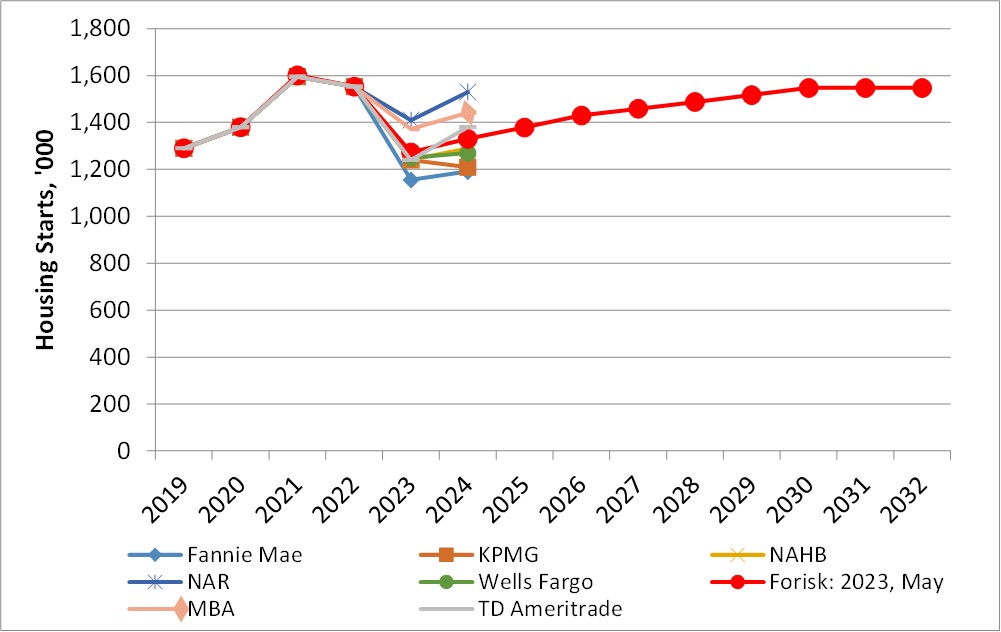This post is the third in a series related to the Q2 2023 Forisk Research Quarterly (FRQ) which includes forest industry analysis, timber price forecasts, and featured research on western silviculture.
The housing sector stabilized over the quarter, leveling out after five consecutive months of declines. Seasonally adjusted starts fell 0.8% in March to a 1.420-million-unit rate. Single family starts rose 2.7% in March but were outweighed by a 6.7% drop in multifamily. Over the quarter, total starts were relatively unchanged from Q4, averaging a 1.395-million-unit rate. Likewise, single family starts fell 1.0% to an 849-thousand-unit pace. Meanwhile, multifamily rose 0.9% to a 536-thousand-unit rate. Despite the declines to close out the year, housing starts totaled 1.553 million units in 2022, the second highest level since 2006.
Methodology
Each quarter when updating our Forisk Research Quarterly (FRQ) forecast models, we revisit prior projections and review applied research on business and economic forecasting. Forisk’s Housing Starts Outlook combines independent forecasts from professionals in the housing industry. Currently, these include Fannie Mae, KPMG, the National Association of Realtors (NAR), the Mortgage Bankers Association (MBA), the National Association of Home Builders (NAHB), TD Ameritrade, and Wells Fargo. Forisk applies long-term assumptions from the U.S. Energy Information Administration (EIA) and Harvard’s Joint Center for Housing Studies to establish the peak and trend over the next ten years (Figure).

Projection
Forisk projects 2023 housing starts of 1.273 million, down 18.1% from 2022 actuals. This represents a 1.0% increase from our January 2023 estimate. Across the market, high mortgage rates continue to hamper housing affordability. In the latest meeting, the Fed raised rates by 25 basis points, bringing its target federal funds rate to 5.0-5.25%. Since March 2022, the Fed hiked rates by 500 basis points. This represents the fastest pace of monetary tightening since 1980, when rates doubled in a 6-month period. [1],[2]
Forisk’s Base Case declines sharply in 2023 before beginning to recover. The forecast peaks at 1.55 million housing starts towards the end of the projection. Despite widespread consensus that housing starts are trending lower for 2023, estimates vary widely for 2024. For example, KPMG forecasts a bearish 2024 with an estimate of 1.210 million starts. Meanwhile, NAR posits a much more bullish 2024, rising back to 1.530 million starts. This represents a range of 320 thousand starts.
[1] Bryson, J.H. (May 3, 2023). Economics. FOMC Raises Rates by 25 bps But Signals “Hawkish Pause. Retrieved from: https://wellsfargo.bluematrix.com/links2/html/993d8a20-0565-4e1d-81be-98ce144e594e.
[2] Board of Governors of the Federal Reserve System (US), Federal Funds Effective Rate [FEDFUNDS], retrieved from FRED, Federal Reserve Bank of St. Louis; https://fred.stlouisfed.org/series/FEDFUNDS, May 3, 2023.

Leave a Reply